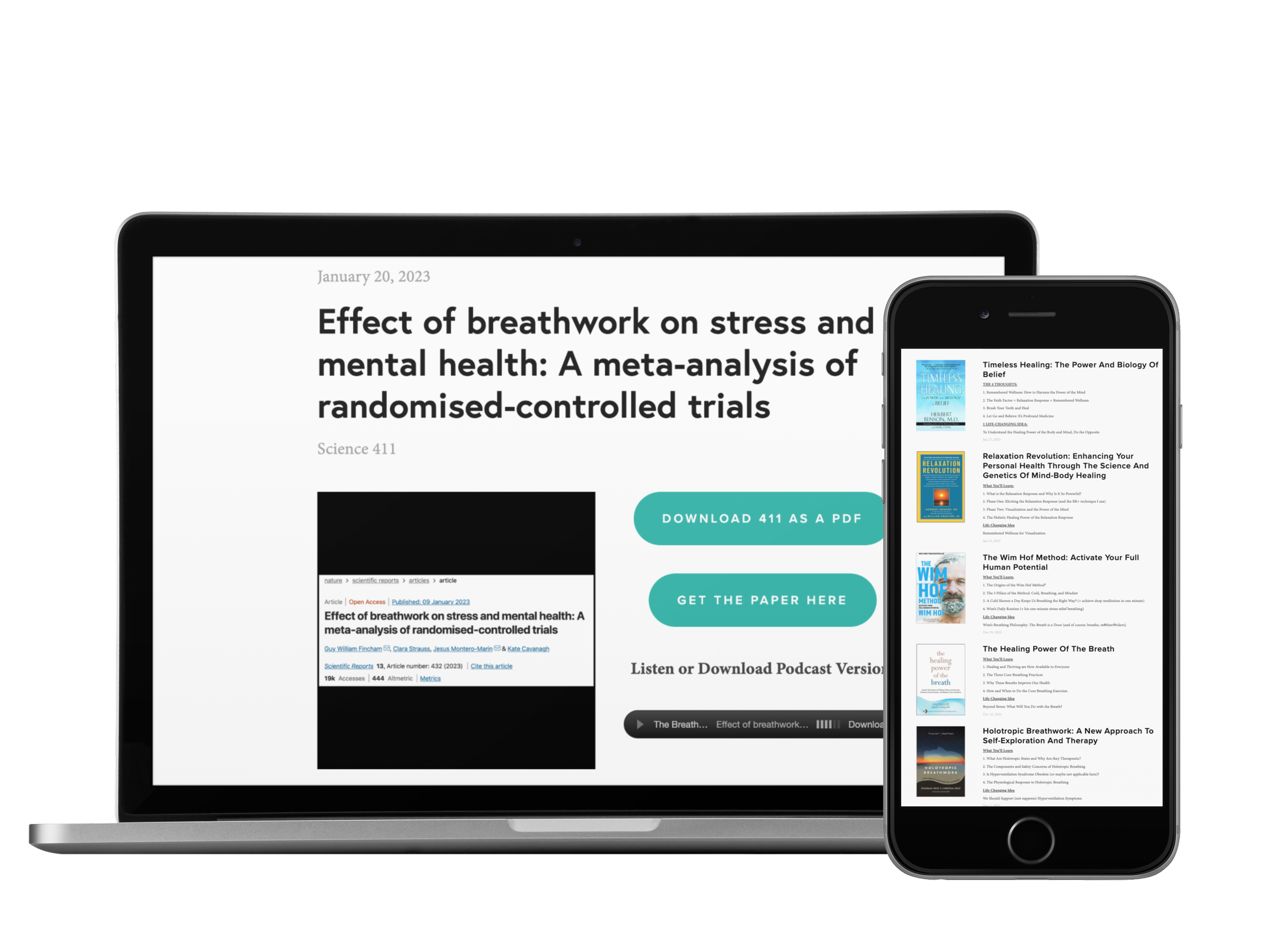Listen Instead of Reading
If you enjoy listening, you can subscribe to the audio version on Spotify, Apple Podcasts, and Audible so you don’t even have to look at the email 😊
Breathing for Better Mental & Emotional Health 4-Week Course
There are now 25 students enrolled in the course. Words can’t adequately express my gratitude and excitement 🙏
It begins this Sunday, May 7, so it’s not too late to join if interested.
Learn more and enroll here.
Hope to see a few more of you there!
4 THOUGHTS
1. More Joy: The Nose Should Be Considered Alongside the Vagus Nerve
“The emerging scenario strongly suggests that the effects of SNB [slow nasal breathing], beyond the relative contribution of vagal stimulation, are mainly ascribable to olfactory epithelium stimulation.”
– Zaccaro et al. (2022), Neural Correlates of Non-ordinary States of Consciousness in Pranayama Practitioners: The Role of Slow Nasal Breathing
This was a challenging & super fun paper to read. Here is my two-sentence summary of it:
Slow nasal breathing has significantly different effects on the brain than slow mouth breathing, which results in less physical and psychological tension, less anxiety, more joy, and a relaxed yet fully aware altered state of consciousness. Nasal stimulation should be considered alongside vagal stimulation as a primary mechanism behind the benefits of slow breathing.
2. Upward Spirals in Your Life that Lift You
“In fact, science documents that positive emotions can set off upward spirals in your life, self-sustaining trajectories of growth that lift you up to become a better version of yourself.”
– Barbara Fredrickson, Ph.D., Love 2.0
This is the real power of the breath. By using your practice to regularly elicit positive emotional states—a hallmark feature of slow nasal breathing—you set off upward spirals that “lift you up to become a better version of yourself.” 👏
3. A New “Long Beard” and the Buddha’s Advice
“Years ago, a wonderful Hindu teacher, Swami Chinmayananda, who taught me the Vedanta, said, ‘The longer the beard, the bigger the fake.’ And he, himself, had a beard that almost touched the floor!”
- Larry Rosenberg, Three Steps to Awakening
That makes me laugh. But, it also makes me think of how, in today’s society, our version of “long beards” are our credentials touching the floor: Ph.D., MD, Psy.D., D.O., and on and on : )
We can apply ancient wisdom to handle this modern scenario:
“[T]he Buddha tells us to take the counsel of the wise. We would be foolish to overlook their immeasurable knowledge and skills. But he also tells us to test the teachings in the fire of our own lives. Listen to them, weigh them, and investigate them.”
Sounds reasonable to me…almost as if that Buddha person knew a thing or two : )
4. Beating the Stress of a New Type of Gravity
Gravity is a stressor. But because there’s no way out of it, our bodies have adapted, and we don’t even notice it.
I think we should start treating the external stressors of our modern world (emails, social media, news headlines) like gravity. There’s basically no way out of them at this point.
What we need to do is adapt such that we hardly notice them.
Conscious slow breathing exercises are that adaptation. They’re always available to counter the weight of our new gravity.
1 Quote
“The breath is free from greed, hatred, delusion, and fear. When the mind joins with the breath, the mind temporarily becomes free from greed, hatred, delusion, and fear.””
1 Answer
Category: Basic Breath Processes
Answer: During exhalation, these “folds” can come together and vibrate to create sound.
…
(Cue the Jeopardy! music.)
…
Question: What are the vocal cords?
In good breath,
Nick Heath, T1D, PhD
“Breathing is the compound interest of health & wellness.”
P.S. Dog owners will know
The Garlic Breath of the Week
Here is the most-liked post this past week.
* An asterisk by a quote indicates that I listened to this book on Audible. Therefore, the quotation might not be correct, but is my best attempt at reproducing the punctuation based on the narrator’s pace, tone, and pauses.






